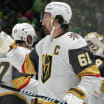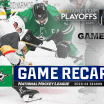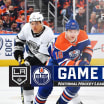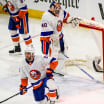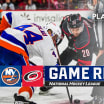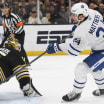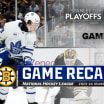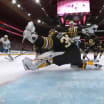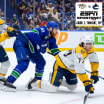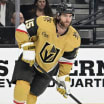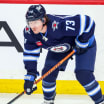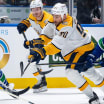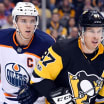Cam Atkinson looks up to friend and mentor Martin St. Louis, figuratively if not literally. In Connecticut during the offseason, they play golf, which means they compete against each other. After Atkinson got engaged last summer, St. Louis hosted a party. Atkinson and St. Louis competed to see who could make the next shot on the pool table -- and to see who was taller.
Who won?
"You know something?" Atkinson's father, Tom, said with a laugh. "They're pretty close."
Cam Atkinson playing above his height
5-foot-8 Blue Jackets forward letting skill, not size, define his game
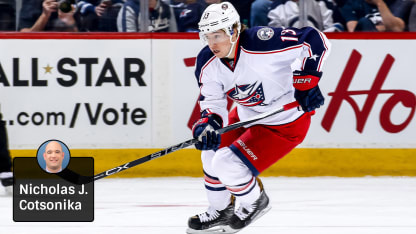
Each is listed as 5 feet 8 inches. Each has risen above that with talent and determination.
St. Louis went undrafted but played 16 seasons in the NHL as a right wing, winning the Stanley Cup, the Hart Trophy as the NHL's most valuable player and two scoring titles with the Tampa Bay Lightning. Now 41, he will have his No. 26 retired by the Lightning before they play the Columbus Blue Jackets at Amalie Arena on Friday (8 p.m. ET; SN, TVA Sports, SUN, FS-O).
Atkinson was selected in the sixth round (No. 157) of the 2008 NHL Draft, and is in his sixth season as a right wing with the Blue Jackets. At 27, he has 40 points (20 goals, 20 assists) in 40 games, on pace for 41 goals and 82 points, which would shatter his career highs of 27 and 53, respectively.
Entering Thursday, he was tied with St. Louis Blues forward Vladimir Tarasenko for sixth in the League in goals. His nine power-play goals tied him with Pittsburgh Penguins captain Sidney Crosby and Philadelphia Flyers forward Brayden Schenn for the NHL lead. His two shorthanded goals tied him with 14 others for first in that category as well.
He works with the same trainer St. Louis did, Ben Prentiss. He has the same coach St. Louis did when he broke out as a star in Tampa Bay, John Tortorella.
"He's worked extremely hard and is getting what he deserves," St. Louis wrote in a text message to NHL.com. "He's found a coach that understands his game, and he's taking it to another level."
Like St. Louis, Atkinson had to prove his could play with the big boys growing up. He played at a U.S. college (St. Louis went to Vermont; he went to Boston College), spent time in the minors early in his professional career and has a fiery, cocky, prove-you-wrong attitude.
"I mean, I was the third pick overall," Atkinson said, pausing to set up the punch line, "in the sixth round. That's what I tell people."
He laughed.
"I think I have to have [that attitude]," Atkinson said. "Everyone at every single age, every single level, told me I wouldn't make it to the next level. So I think that's kind of fueled my fire, for sure. Obviously being a smaller guy, you have to have a little arrogance to your game. That's what's made me the person, the player, I am today."
It is true that some doubted Atkinson. His father said he was "by far the smallest kid, always, everywhere we went." Opponents would chirp at him, try to run him. He didn't go until the sixth round for a reason.
"Pretty much all of it is because of his height," said Blue Jackets general manager Jarmo Kekalainen, who was the Blues assistant GM and director of amateur scouting when Atkinson was drafted. "That's how some of the real good players slip. You're never certain how they handle the big boys and the traffic and the physical play of the NHL."
But Atkinson has been elite at every level. His father, originally from Vancouver and a former junior player, coached him and set him up with skating and skills specialists, knowing he would have to be smarter, stronger and quicker than his competition.
Atkinson played youth hockey with and against kids who would go on to the NHL, often above his age group, traveling to Canada. He played in high school at Avon Old Farms in Avon, Connecticut, which produced Hockey Hall of Fame member Brian Leetch and Los Angeles Kings goaltender Jonathan Quick. One of Atkinson's teammates was Pittsburgh Penguins forward Nick Bonino.
His talent was obvious.
"I played a lot against him and I played with him growing up, just summer teams and stuff," Blue Jackets teammate Sam Gagner said. "He's always had a knack for the net. He gets open really well and finds those areas."
His work ethic was obvious, too.
"I'm sure there were people doubting him at his size, but they were not on our staff," Boston College associate coach Greg Brown said. "He just had such a hunger to play and be successful. I think his attitude and his willingness to do what it took made us believers. I think it was part of his makeup to work that hard."
Atkinson led the NCAA in goals as a sophomore (30) in 2009-10 and was second as a junior (31) in 2010-11, when he was a finalist for the Hobey Baker Award as college hockey player of the year, before going pro. But he did more than that.
"You would always see him backcheck from goal line to goal line to catch a guy," Brown said. "A lot of goal-scorers at this level might not do that. But it was part of who he was. You didn't have to tell him to do it. He just saw that he was needed back there, and he busted his butt to get back and help. His desire to win and be successful again made us think that there aren't a lot of 5-8 guys, but if some of them are going to make it, he has a good chance to be one of them."
In the American Hockey League, Atkinson had 87 points (49 goals, 38 assists) in 89 games in parts of three seasons with Springfield. Once established in the NHL, he was remarkably consistent and trended upward for three seasons: 21 goals and 40 points in 2013-14; 22 and 40 in '14-15; 27 and 53 last season.
He trained hard with Prentiss in the offseason and adhered to a strict diet.
"I don't think he's going to let his height get in the way," Kekalainen said. "He's built strong. He's fast. He's quick. He's got good one-on-one skills. He can spin off checking players. But most of all, I think he's built the right way for a short guy or a smaller guy, and he's got that explosiveness needed for a smaller guy to get away from checkers."
Atkinson clashed with coach Todd Richards when the Blue Jackets struggled at the start of last season. He was a healthy scratch for the seventh game; Richards was replaced by Tortorella after a loss dropped Columbus to 0-7-0.
"When Torts came in, Cam called Marty, and Marty said, 'He will love you. You play like you play, and this guy will reward you for working hard,' " Atkinson's father said. "And sure enough, people are like, 'How do you get along with that guy?' And Cam goes, 'I've never had a better coach.' "
Atkinson has made a leap this season for three main reasons:
One, Tortorella has played him more in all situations.
"I love that," Atkinson said. "He believes in me, trusts me. So it's a two-way street. I've got to give it to him as well. I've got to be ready to rock and roll."
Two, Tortorella and assistant coach Brad Larsen, who coached Atkinson in the minors, have moved him from the middle of the ice to the left circle on the power play. That's where Atkinson used to use his right-handed shot for one-timers and his hockey sense to find space around the net growing up and in college, and he's finally getting to do it in the NHL.
Atkinson has helped, and benefited from, a unit clicking at 25.8 percent, No. 1 in the League entering games Thursday.
Three, Tortorella has been striking the right balance between showing confidence in Atkinson and not letting him get too comfortable, so he doesn't get too cocky, so he doesn't get too satisfied, so he focuses on preparation, so he keeps improving.
"I think he's beginning to get it," Tortorella said, emphasizing the word "beginning."
"I think sometimes it can get good to him, and he forgets how to do the things leading up to the game. He's not good enough for that to happen. He's a really good player when he stays on top of himself, and I think there's more there. I think he can be even better, and that's what I want him to think about.
"He's in a situation now where he's getting a little bit of notoriety. He's been a pretty consistent player. Now there's more responsibility that falls on your shoulders to be better, because that's just the way it is if you're going to be a really good player in this league. That's the phase he's in, I think."
The message seems to be sinking in. The question now is: How good can Atkinson be?
"I always knew and believed in myself that I could be this type of player," Atkinson said. "But the best players in the world do it on a regular basis. That's what I'm trying to do."
